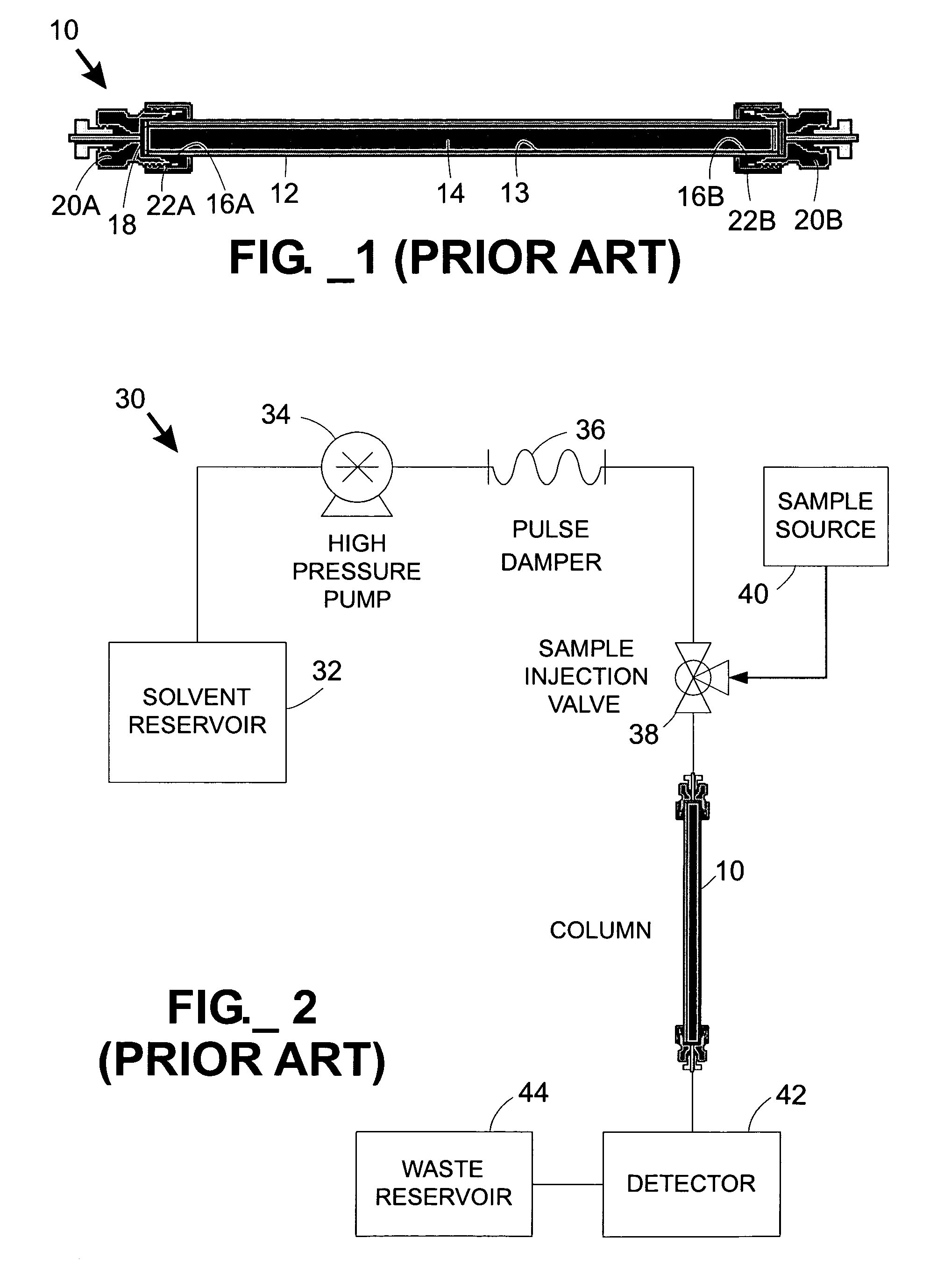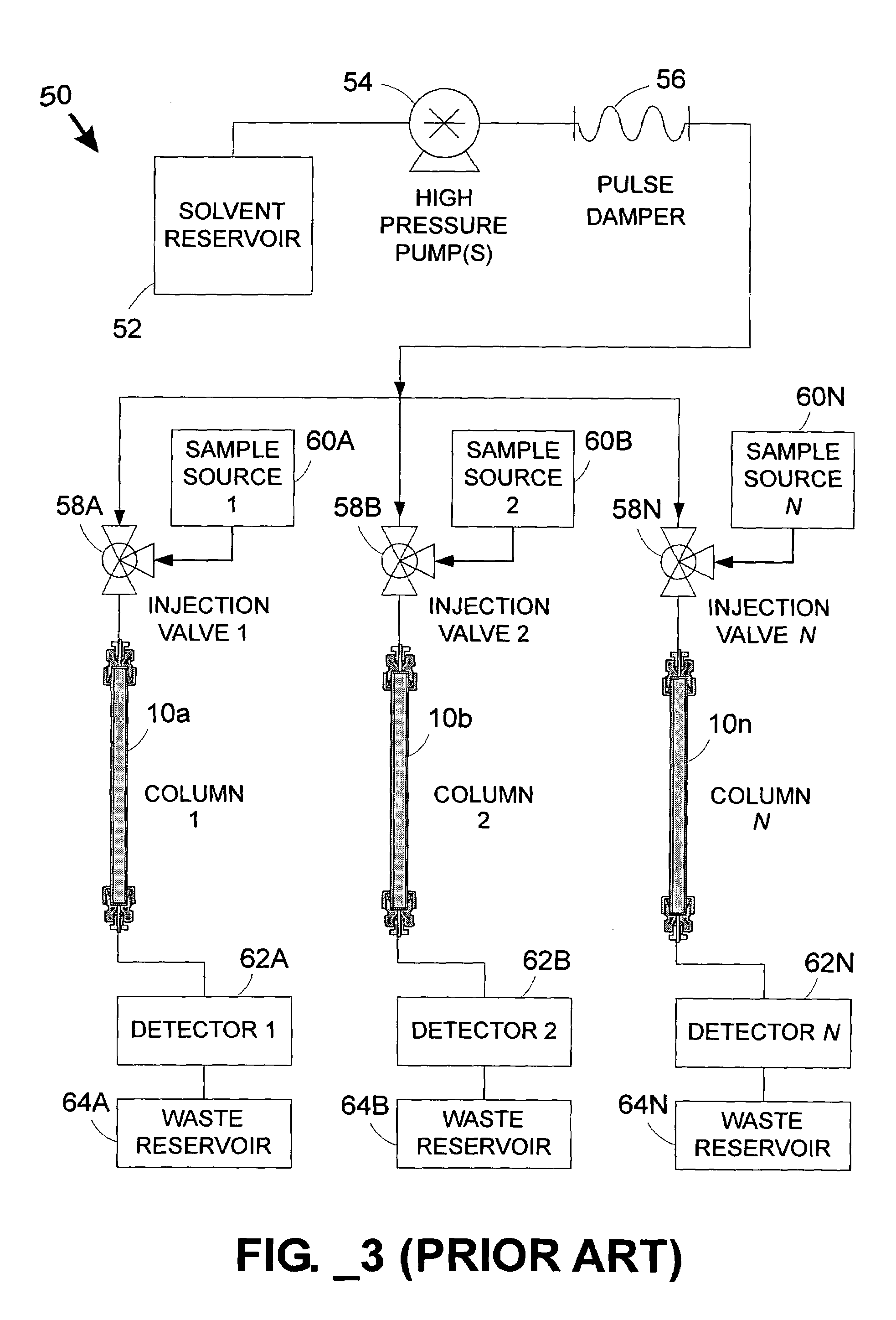For example, if it is desired to evenly split common supplies of solvents or reagents to multiple process regions, it may be difficult to ensure that each
process region receives a substantially equal flow.
The problem may be exacerbated by the presence of
solid materials, such as catalysts or separation media, e.g., due to variations in
solid particle types, sizes, and / or packing density.
Additional concerns may arise if it is desired to vary the composition of common solvents or reagents over time, since it can be difficult to ensure that each process region is subject to the same supply
fluid composition at substantially the same time.
While
instrumentation and flow control devices might be added to each process region to address these problems, adding such components can rapidly increase the complexity and cost of parallel fluid processing systems to the point that they are no longer economical to build, operate, or maintain.
Moreover, if microfluidic process regions are used, it can be difficult to accurately measure extremely low fluid flow rates supplied to individual process regions.
In the absence of systems or methods for ensuring that reproducible
process conditions are maintained in parallel fluid processing systems, it can be difficult to draw confident conclusions from data obtained from individual process regions in different experimental runs, let alone compare data obtained from multiple process regions in the same experimental run.
As a result, the scientific utility of efficient parallel fluid processing systems appears to be limited.
Due to the cost of conventional tubular
chromatography columns, they are often re-used for many (e.g., typically about one hundred or more) separations.
However, this time-consuming flushing or cleaning step does not always yield a completely clean column 10.
This means that, after the first separation performed on a particular column, every subsequent separation may potentially include false results due to contaminants left behind on the column from a previous run.
Eventually, columns become fouled to the point that they are no longer useful, at which point they are removed from service.
One issue is accounting for different rates of fluid flow through each column in a multi-column
system, particularly in low-flow environments not well-suited for inferential flow measurement.
When a common pump supplies multiple columns (e.g., columns 10A, 10B, 10N, 145A–145X, or 439A–439X), however, it is difficult to predict the flow through each individual column—even if the columns appear substantially identical—since impedance to fluid flow varies somewhat from one column to another and fluid flow will be biased toward the column(s) with the least fluidic impedance.
That is, even when columns are carefully selected in an attempt to match their impedances, variations between columns will inevitably cause backpressure differences that in turn cause flow rate differences between fluid streams.
To further complicate matters, many commonly employed chromatographic techniques utilize a
solvent profile that changes with time.
Thus, in a parallel multi-column system employing a common set of pumps for performing
gradient elution, the presence of a changing
solvent concentration exacerbates the difficulty of ensuring that identical mobile phase conditions (i.e., including both flow rate and concentration) are provided to each column at the same time.
Pressure ramps are inherently transient conditions, and can lead to unpredictable flow patterns in a common-fluid-supply parallel
separation system before steady-state flow conditions are attained.
These unpredictable flow patterns exacerbate column-to-column variability
Due to the difficulty of providing identical mobile phase conditions to each column in a parallel
separation system with a common
fluid supply, seemingly identical columns tend to perform differently.
As a result of the different performance characteristics of seemingly identical columns in a parallel
separation system with a common
fluid supply, it is difficult to compare analytical results obtained from one column to another.
As evident from FIG. 9, in which the individual chromatograms from FIG. 8 have been time-shifted to a common
retention time for the first unretained peak, a mere phase shift is generally insufficient to eliminate column-to-column variability for the remaining (retained) species.
Since retention times are used to identify species within a sample, variation in retention times from one column to another increases the uncertainty of positively identifying individual species.
 Login to View More
Login to View More 


